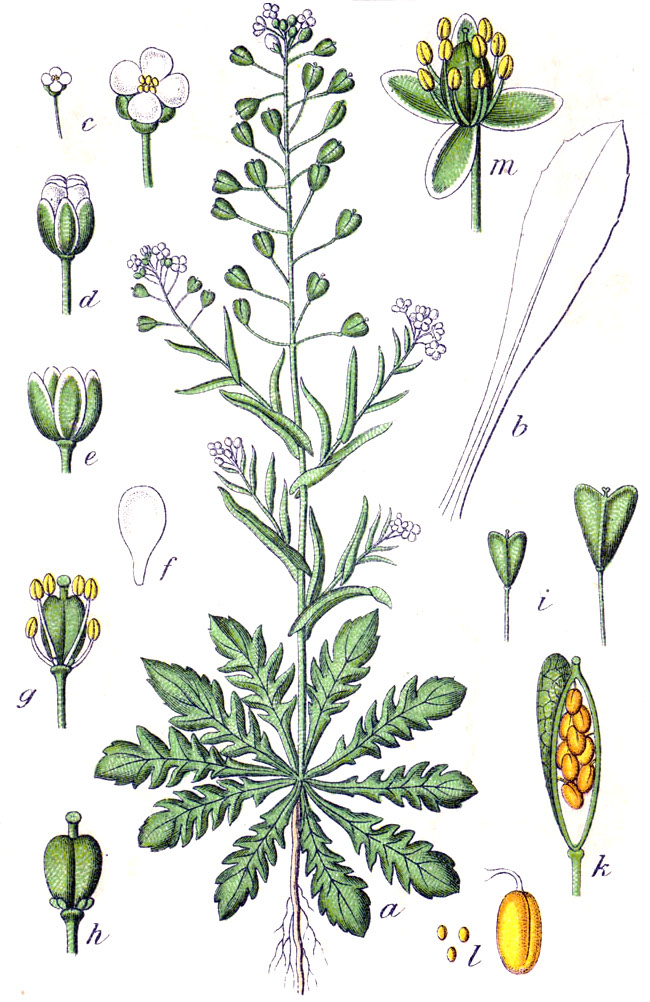! Nouveau site ici !
Vita > Plantae > Magnoliophyta > Magnoliopsida > Capparales >
Brassicaceae > Capsella
Capsella bursa-pastoris
(Capselle bourse-à-pasteur)




 | *** - **
| *** - **
Vita > Plantae > Magnoliophyta > Magnoliopsida > Capparales >
Brassicaceae > Capsella
Capsella bursa-pastoris
(Capselle bourse-à-pasteur)

Une herbe de la famille du chou. C'est une plante annuelle ou cela peut prendre 2 ans pour compléter son cycle de vie. La tige est dressée. Il atteint 60 cm de haut. Il a une rosette de feuilles près de la b... (traduction automatique)
→suite
⬀
Le  donne accès au menu
donne accès au menu (c'est votre point de repère) 😊 ;
En dessous vous avez la classification, à partir de la vie (Vita, premier rang) jusqu'à la classe au dessus de la plante, dont vous trouvez ensuite le nom scientifique/botanique (latin) puis le nom commun (français), le cas échéant ;
C'est aussi un lien vers la fiche complète (tout comme la ✖, en bas à droite, et le +, en dessous de la description) ;
Vient alors l'illustration (ou ce qui la remplace, en attendant), la comestibilité :
Et en bas
⬂



